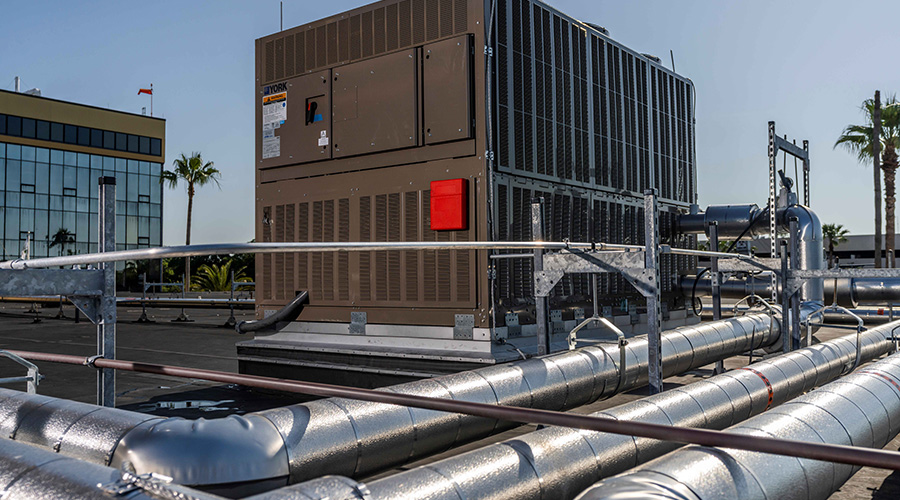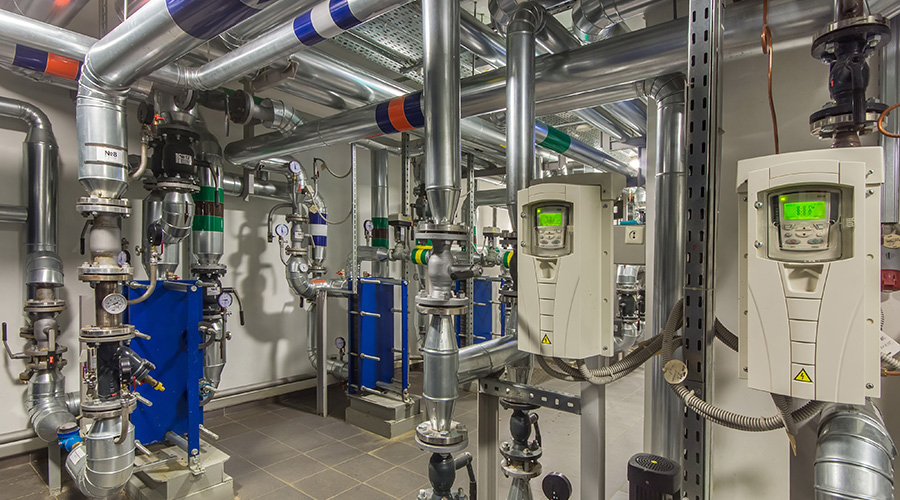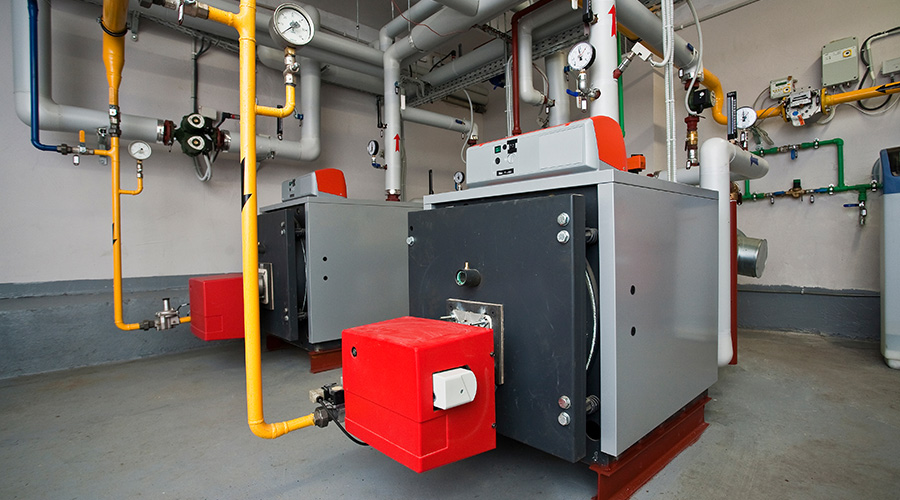What Facility Managers Need to Know About Geothermal Ground Source Systems
Cost savings and reducing carbon emissions are just two of the many potential benefits of geothermal ground source systems.
By Charles C. Copeland and Tristan Schwartzman
As public pressure grows for property owners to reduce their carbon footprint, attention has shifted to renewable energy, especially solar and wind power, with some states moving toward complete electrification. In that context, another renewable energy source – the geothermal ground source system – is emerging. It reduces fossil fuel use by using electricity very efficiently. Facility managers should know how to explore its potential and assess its cost-effectiveness.
To use this renewable energy effectively, it’s important to understand the implications of this energy source, the tools that reveal its potential, and how it can contribute to the full electrification of major facilities. Increasing awareness of those implications is key to maximizing this vital resource.
A geothermal ground source system conveys thermal energy in the subsurface ground. That energy can be accessed from larger lot areas to provide efficient heating and cooling for nearby buildings. For individual properties, a geothermal ground source system works as follows: a series of pipes called a heat exchanger is buried in shallow or deeper ground near a building or in vertical wells. It circulates fluid to the building’s heat pump system, which provides heated or cooled air, water, or refrigerant for the building. In winter the heat pump extracts heat from the ground, while in summer the reverse occurs: the pump moves heat from the building into the ground.
That process can provide significant benefits to individual properties – in energy and financial savings. Several considerations are key to determining the extent and value of those benefits.
Geothermal systems are most applicable, for instance, to larger lots that are less densely populated. A high-rise office tower on a relatively narrow lot is not as suitable as a suburban office park. Many types of properties are, however, potentially good fits. They include colleges and universities, medical centers, and office properties.
Larger lots also provide more variation in the ground underneath, as the topography must be suitable to installing cost-effectively the necessary pipes or wells. But, even in cases where the lot size is not sufficient, hybrid options are available that use the geothermal system for most of the year and augment it during periods of more extreme temperatures that result in excessive rising or falling of ground temperatures. These hybrid options might include a cooling tower to discharge excess heat or an air-to-air heat pump to augment it.
Understanding the potential of any property – with its own mixture of lot size, topography, and building type – is what motivated the City of New York to commission our firm to create in 2018 the first Geothermal Ground Source Screening Tool. It lets property owners easily assess the cost-effectiveness of geothermal heating and cooling for every lot in the city – nearly 900,000 lots.
The New York State Energy Research and Development Authority (NYSERDA) subsequently broadened the applicability of that model to a suburban county, when it retained our firm to help replicate the New York City model for Westchester. The resulting online tool – Westchester GeoPossibilities – was unveiled during the summer of 2021. It offers a suburban model with national implications, as it can be more easily replicated across the country.
For facility managers in New York City or Westchester, these tools provide a readily available means of getting a first impression of the potential of geothermal energy systems. Of course, if that impression appears feasible, it should be followed by a more detailed study.
A good strategy is to see if other property owners in the area have explored geothermal systems. Colleges and universities are often in the lead, as they typically have large campuses, buildings of relatively low density, and a student body eager to reduce carbon emissions. The facility management teams may be able to offer advice and introductions to nearby experts.
Those experts should include mechanical engineers experienced in designing geothermal ground source systems. The mechanical engineers can then engage geologists to assess the suitability of the underground conditions. An assessment will be needed of both the intensity of the load – how big and densely occupied is the building – and the composition of the ground underneath.
While geothermal ground source energy is free, there is a cost to extract and circulate it, and there are upfront expenses associated with installing the geothermal system. The cost can best be justified when a new heating or cooling system is needed, with much of the cost recovered over time in savings and reductions in carbon emissions. In addition, incentives are available from the federal government and often from state and local energy providers.
Because a geothermal system is typically delivered to nearby buildings, it does not require massive infrastructure to transport it from a distance and to store it. Geothermal heat pump systems do need electricity to move the fluid around, but that requires a relatively small amount of electricity, reducing the burden on the electrical grid. In the case of a college campus, that electricity could be generated by nearby solar or wind power. In any event, the reduced pressure on the electrical grid is another major benefit.
If there is sufficient interest among government officials, business, or civic leaders in a particular state, city, or county, the New York City and Westchester models can be replicated there. Relevant topographical data is usually available through US Geological Survey maps and requires review by local experts, but that process is greatly facilitated by the existence of these two models. Local jurisdictions may need support from the state – as Westchester received from NYSERDA – but that cost is more than justified by the prospect of extraordinary environmental benefits across an entire jurisdiction.
Geothermal systems provide a major environmental opportunity for the nation. Facility managers can play a vital role in exploring that opportunity and determining its implications for their properties.
Charles Copeland is President and CEO of New York City-based Goldman Copeland Consulting Engineers, where Tristan Schwartzman is a Principal and Director of Energy Services.
Related Topics:












